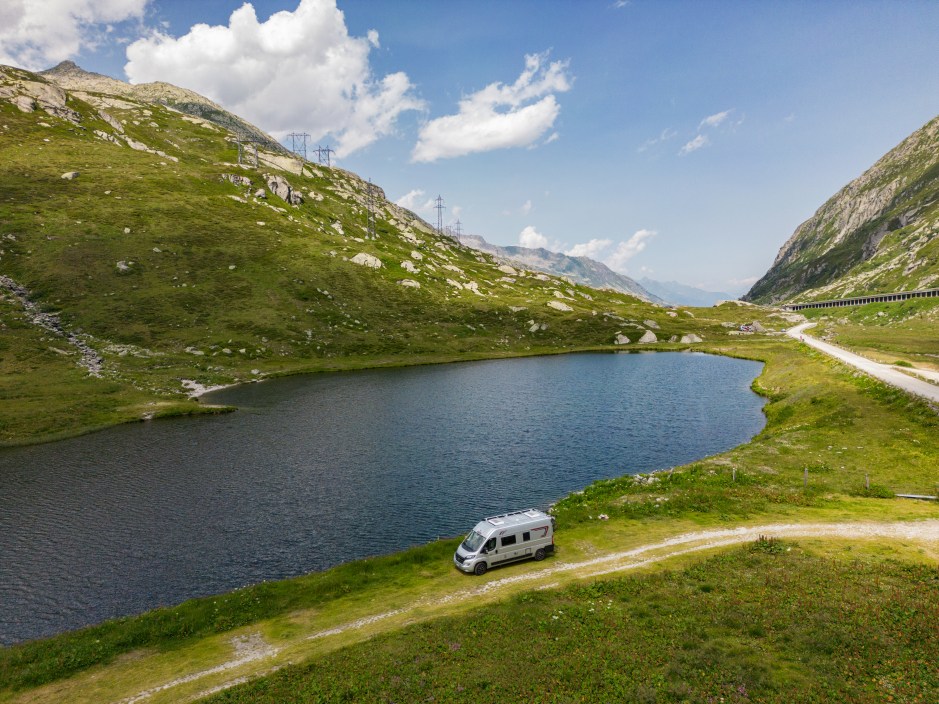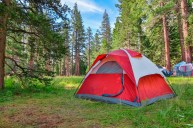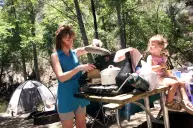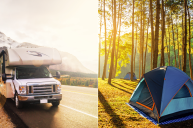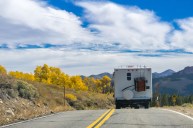As a former full-time van-lifer and avid adventurer, I've spent years exploring public lands and hunting for camp spots. Before moving from the East Coast, I was strictly a backpacker and car camper, setting up tents in campgrounds and the backcountry. But as I moved west and started building out my van, the term "boondocking" began to creep up. I'd never heard the term before, but suddenly it was in every conversation, website, and forum.
Free camping on public lands? Sign me up.
But as I tried to look deeper into the meaning and, moreover, the legality of boondocking, the more I realized it wasn't quite that simple.
Boondocking is a complicated topic, largely becuase there isn't a go-to, federally-run resource on the topic where you can be 100% sure you understand where you're allowed to boondock, for how long, and what rules exactly you need to follow. But after years of doing it myself, chatting with other boondockers, and the rise of some great, trustworthy resources like Boondocker's Bible, I've sorted out the what, where, and hows.
Here's everything you need to know about how to camp for free on public land, aka boondocking:
- What Is Boondocking, Exactly?
- How Is Boondocking Different from Camping?
- Why Would You Want to Boondock?
- Is Boondocking Legal?
- Is Boondocking Safe?
- Where Can You Boondock?
- How to Find Places to Boondock
- Boondocking FAQs
What Is Boondocking, Exactly?
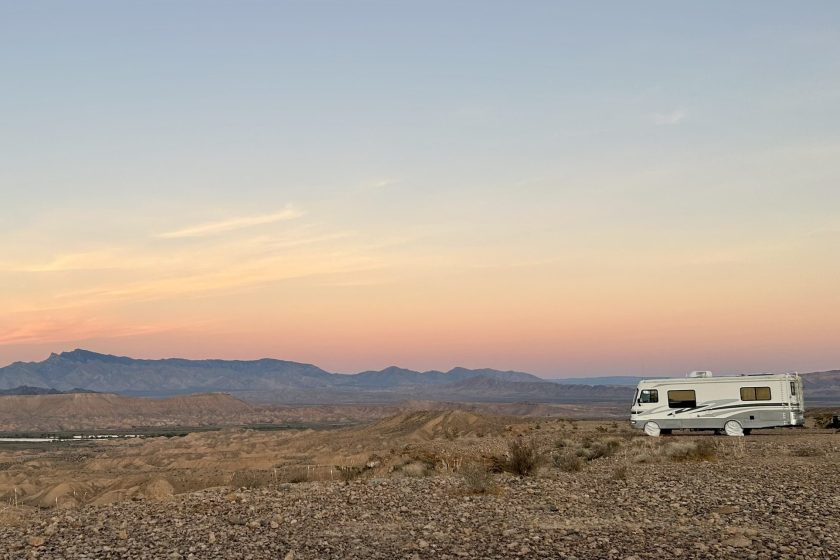
Lucian Provines, Getty Images
By the simplest definition, boondocking is free camping away from a developed campground or designated campsite. It's a sub-type of dispersed camping, but it specifically means you're sleeping in your car, a camper trailer, RV, or an adventure van and not in a tent or out in the open (the latter of which is also called cowboy camping).
Usually, you're boondocking on some sort of public land (often designated by the Bureau of Land Management, or BLM). You're always boondocking where there are no amenities like water, electricity, or a toilet, so you have to be entirely self-sustainable. And often, you can stay for up to 14 days—though that length depends on what type of land you're on (more on the topic in a minute).
How Is Boondocking Different from Camping?
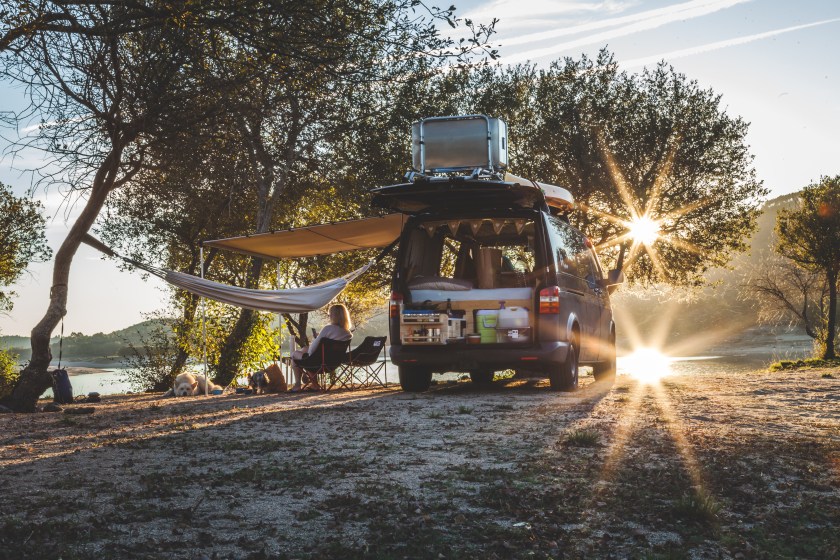
Michael Dolicke, Getty Images
Camping refers to vacationing in a tent, shelter, RV, or similar structure. It can be in your backyard, at a campground, in the backcountry, or, if you want to stretch the lines, in a parking lot.
Usually, camping includes the potential to have amenities (e.g., bathrooms, running water) and sometimes requires you to pay for a campsite, the money of which goes toward the upkeep of said amenities and the use of the land.
Boondocking, meanwhile, is a form of camping that demands self-sufficiency. It's off the beaten path outside structured campgrounds or campsites and it requires you to be more prepared. You are without amenities and located in remote areas that are more natural and wild than a developed campground.
Boondocking vs. Dispersed Camping
As mentioned above, boondocking is a sub-type of dispersed camping. Dispersed camping is an umbrella term that basically includes any camping outside an established campground. This is typically on public lands, such as national forests or BLM land.
Usually, dispersed camping requires you to be entirely self-sufficient (with no nearby amenities), is more remote than traditional camping, and doesn't define the type of shelter you camp in. If you're dispersed camping, you may be in a tent next to a mountain tarn or in an RV on the side of a dirt road in the desert.
To boondock, you are off-grid; using an RV, camper trailer, camper van, or car as your shelter; and you are limited by how you access your camp spots, as it must be along roads allowing motorized use.
Unlike backpackers who in some areas may traverse open terrain to find a suitable camp, boondockers are generally limited to roadside areas and pre-made spots.
Because they're traveling in a self-contained vehicle, boondockers typically have their own amenities on hand, such as a generator, fresh water tank, solar panels, and gray and black tanks. Some regular boondockers even equip their rigs with satellite internet or cell boosters.
People often use "boondocking" interchangeably with "dry camping" and "wild camping," all of which correlate to the remoteness of the environment. However, because you can technically dry camp in a parking lot or a friend's driveway or wild camp in a tent, neither term entirely captures the full essence of boondocking.
Why Would You Want to Boondock?
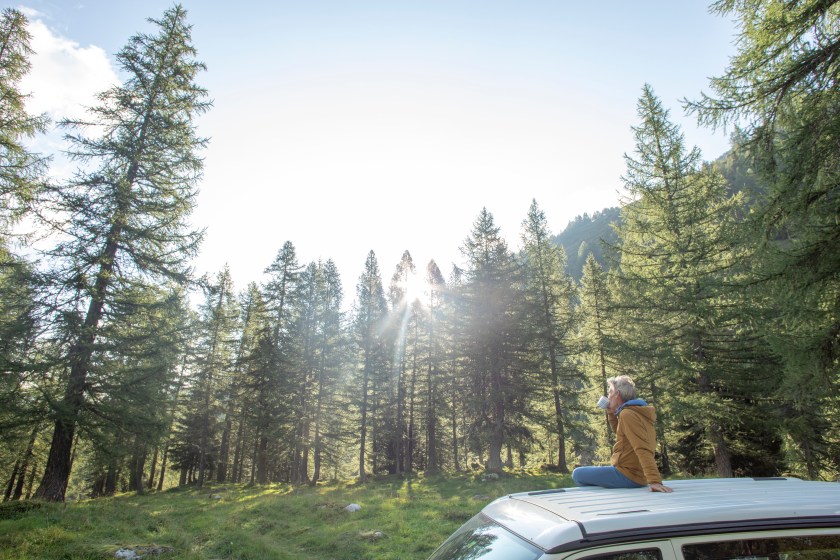
AscentXmedia, Getty Images
With so many well-managed campgrounds with amenities—some even have WiFi!—why bother with boondocking? There are many reasons but, as someone who has posted up in every type of campsite over the years, these are my top five:
- Seclusion: At traditional campgrounds, even spacious ones, you'll often have other campers nearby, within earshot, or walking past or through your campsite. Boondocking, you almost always have privacy and solitude. Not only do you get to truly enjoy being immersed in nature, but you get to do so in the comfort of your boondocking rig.
- Cost savings: For the most part, boondocking is free or requires minimal fees to obtain a permit. Sure, the costs at some campgrounds can be nominal ($10 a night). But high-season, near cities or popular attractions, and especially at a campground that offers hookups or amenities like a pool, laundry facility, or wi-fi, you'll often pay a lot more. For some, this is worth it. But if you plan to be out for extended periods, having a free place to park for a few nights (or a few weeks) is incomparable.
- Unspoiled scenery: Campgrounds can have lovely views, but the best vistas I've experienced have been from my boondock sites. I've tucked in next to a desert oasis with the birds and lizards for company. I've perched atop a cliff with canyon views for days. I've camped on the side of a forested mountain with the most glorious sunsets you could ever imagine. If you're looking for breathtaking views, boondocking is a great way to find them.
- Flexibility: Boondockers love the freedom and flexibility to move wherever and whenever. Since you haven't paid, you don't feel locked in to staying at a site if you'd rather move on. You can choose where to camp and stay for as long as that management agency allows. If you grow tired of your view or end up with a rowdy neighbor, you can simply pack up and move on to a new, more secluded spot.
- Self-sufficiency: It can take a lot of courage to break away from the comfort of regular campgrounds and head out into the unknown, especially for women. Boondocking encourages resourcefulness and self-reliance, and you quickly learn self-sufficiency and empowerment as you research where you can go, get to know how much water and food you'll need, and how to stay powered up.
Is Boondocking Legal?
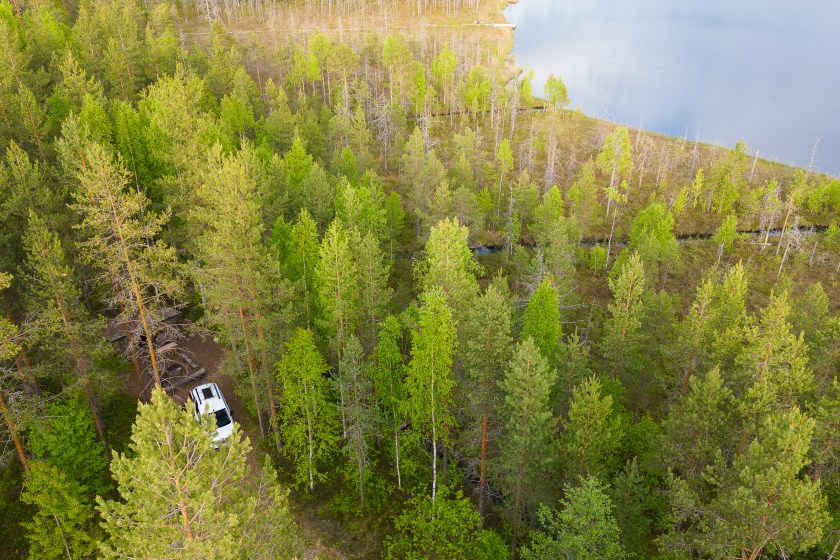
Photofex, Getty Images
The laws around boondocking vary depending on land type, management, and state and local laws.
The safest way to ensure you're boondocking legally is to do so on federally managed land, but that does not mean that only federal laws apply. Most federally managed lands (besides the National Park Service) have applied state and local laws to their lands, making it easier to patrol and manage use. Though there are places where boondocking is allowed on state lands or other areas, you'll need to do your own research on the local area and rules.
To stay legal while boondocking, you must:
- Drive on established roads only (no off-roading or venturing more than 150 feet off designated routes)
- Settle in an established campsite where there has clearly been past occupancy (in other words, you can't cut down shrubs or moves rocks around to make a new campsite)
- Camp in areas free of archaeological remains and away from animal habitats
- Respect the privacy and distance of other campers
- Set up camp at least 200 feet away from a body of water
- Follow Leave No Trace (LMT) principles
Is Boondocking Safe?
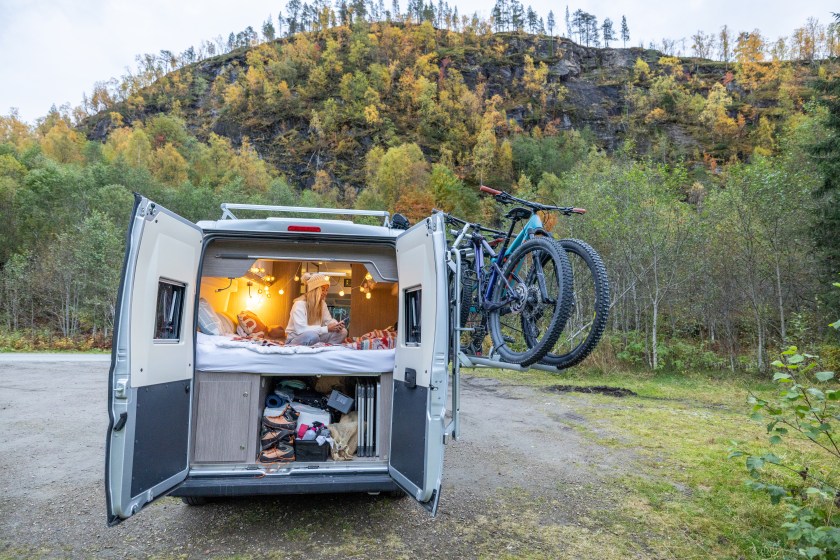
Mystockimages, Getty Images
As a rule, yes, boondocking is quite safe. When people see a van, RV, or camper trailer out in the middle of nowhere, it's usually a clear sign that the individual is looking for solitude.
In all my years of boondocking and van-living as a female, the only time I've ever actually felt uncomfortable or scared was when I was woken up at 2 a.m. by the cops pounding on my door and yelling that I couldn't sleep where I was parked (despite a complete dearth of "no overnight parking" signs).
Of course, where and when you choose to camp, and other circumstances can impact safety. Use your best judgment and be prepared.
- Research the area to understand the risks or nearby hazards.
- Let someone know about your plans, and include your location and date of return.
- Practice good situational awareness.
- Trust your instincts—move on to another spot if a location feels unsafe.
As a woman van-lifer who has spent many nights alone in the boondocks, I practice self and situational awareness. Yes, I still lock my doors at night, even when no one is camping nearby. If you're nervous, consider traveling in a group or with friends and opt for well-known and populated boondocking spots to get started.
No matter what, you should always let someone back home know your plans and how long to wait before worrying they haven't heard from you.
You might also consider carrying self-defense tools and setting up lighting around your campsite to help you feel a sense of security. That said, I'm still more afraid of encountering a mountain lion than other people!
Where Can You Boondock?
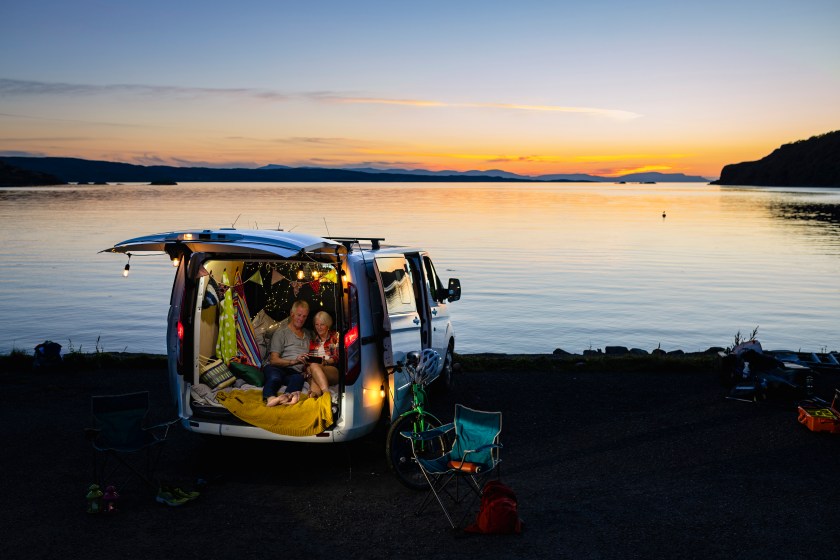
SolStock, Getty Images
The trickiest part for beginner boondockers is learning where you can and can't stay. Where you can boondock varies among states and land types.
Federally managed land is usually your safest bet, but only certain types of it are a-go. Usually, BLM land, national forests, and national grasslands, as well as some state forests, allow boondocking. But each field office will manage those lands differently, so research before you hit the road.
BLM is the most well-known and commonly-used land for boondocking. There are four types of BLM lands: public or undesignated (also called open), developed areas such as campgrounds, wilderness areas, and conservation areas. Each of these has its own general rules for camping, but typically, public lands will have the most appeal and are the most accessible for boondocking.
While you can usually find a spot to camp on public BLM land, you can't camp for free in areas with designated campgrounds or specific-use access. As motorized vehicles aren't allowed in wilderness areas, boondocking is off-limits in these areas.
Keep in mind that land-use rules also change over time when an agency determines a need for more management. For example, when more people started heading out into the wild during COVID, rules began to change in some heavily used areas to minimize damage. In other words: Even if you have been to a place before, do your due diligence and check about boondocking in certain areas. When in doubt, call the local field office and check.
Can You Boondock in National Parks?
As mentioned before, what's legal where depends entirely on the rules of the specific locations.
National parks sometimes allow dispersed camping, but this only applies to sleeping in tents, and dispersed campsites must be accessed on foot (or, on rare occasions, by pack animal or bicycle).
In other words, sleeping inside your vehicle outside of a designated campground is typically not permitted in national parks. Because boondocking is within a vehicle, by this definition, you can't boondock in national parks.
How to Find Places to Boondock
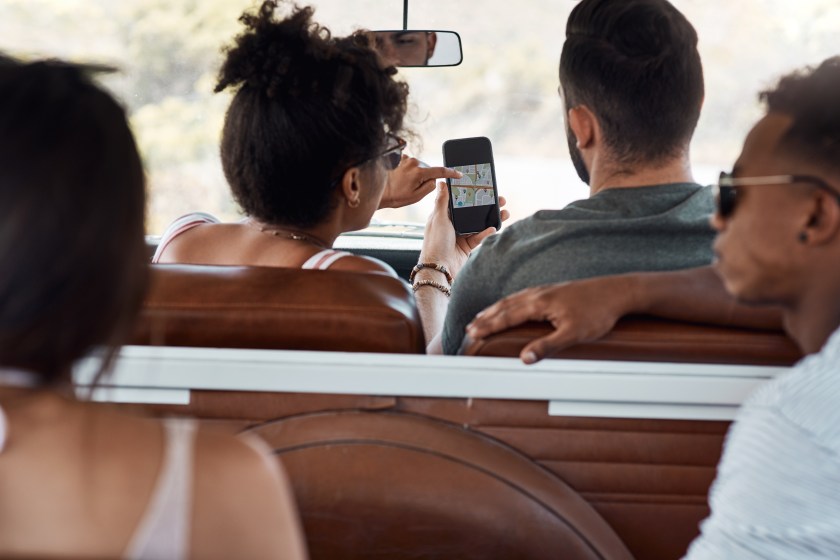
Dean Mitchell, Getty Images
As with almost any information, Google will be your best friend when you're getting started on your boondocking research. Here's where I recommend you begin:
- Official websites: Visit the official websites (or even the regional field offices) of BLM, national forests, or other public land management agencies. The websites will be the most accurate source of information as they are the official resource. However, it's also a great idea to call the local office to ensure there haven't been any changes.
- Maps: National forest and BLM maps show roads open to motor vehicles, offer recommendations on vehicle types (4x4, etc.), and sometimes even notate dispersed camping zones.
- Apps and websites: Utilize apps and websites like Campendium, Allstays, Free Campsites, and The Dyrt that provide information and user reviews about boondocking locations. I also commonly look at trail apps to see nearby recreational opportunities.
- Offline resources: An oldie but a goodie, guidebooks specifically focusing on boondocking or dispersed camping may provide details you won't find online. Generally, these are best for inspiration and historical relevance.
- Local knowledge: Connect with local outdoor enthusiasts, RV clubs, or online forums to get recommendations on specific areas.
Again, this depends entirely on land management regulations and varies from location to location. There are, however, a few rules of thumb for each agency. Remember, each management agency can change the rules at any time, so these are only guidelines—make sure to research before heading out. Generally, on BLM land, you can camp in a single area, defined as a 25-mile radius, for 14 days within a 28-day period. After that, you must pack up camp and move at least 25 miles from your original site. The boondocking timeline in national forests varies but also generally averages about 14 days. However, nearly half of these managed lands have timelines ranging from 5 to 30 days, typically within a 30-day period—so, again, call ahead before you set up camp. In my travels, I've routinely seen people set up campers, trailers, or tents to claim a prime camp spot the week before a holiday weekend, and leave it unattended for the days leading up. I have also seen other people annoyed by this, who on rare occasions vandalize or remove tents when they're determined to be unoccupied for days at a time—poor form answered by poor form. Socially speaking, I would argue that leaving your camp unattended for more than a 24-hour period is unethical. There are exceptions to this, such as if you leave your campsite in good faith of your return. An example would be heading out for a few nights on a backpacking adventure, which of course you intend to return from. While it is legal to leave your camper or RV unattended on federally managed lands, for how long is as varied as where you can camp. On public BLM lands, the limit is 10 days, and in developed recreation areas, no more than 72 hours (and as little as 24 hours in day-use areas). Regarding national forests, the U.S. Forest Service states that you are never allowed to abandon personal belongings, but it doesn't offer a timeline or specify what abandonment means. For more details, I would encourage you to reference the official agency website (such as the local office for the BLM or National Forest land at hand) or the Boondockers Bible on this topic. Yes, of course. As many boondockers have generators, it's generally an accepted part of the experience. Of course, each agency typically has some rule about making unreasonable noise or creating a nuisance that could disturb another person, but running a generator is generally not a problem. That said, if you know you will be running your generator frequently, be considerate of your neighbors and pick a site far away from other campers (especially those in tents). If you have to camp near other people, it's a kind gesture to only run your generator as needed for things such as making food or charging batteries. I've also camped with some friends who have run a long cord and tucked the generator behind a small hill—it blew my mind how such as small knoll could reduce the noise, and I barely noticed it (but greatly appreciated it) Dumping of either sewer or a composting toilet on the ground is not legal anywhere, on any land type, in any situation. As it's a biohazard, there are rules about how this waste must be disposed of, which varies state to state. It takes a long time to destroy dangerous pathogens lingering in human waste, which can impact wildlife, local water sources, and other humans. Frankly, it's also disgusting for anyone who happens along the site after you. Though Leave No Trace ethics recommend burying fecal waste in a hole 4 to 8 inches deep (region depending), this only applies to single use, not an entire compost toilet or septic tank. If you have a black tank, the best practice is to dump it at an official dump station after you pack up camp. For compost toilets, you can bag the waste and throw it away, though some states and counties require that bacterial enzymes be added to the bag beforehand. This is, er, a gray area. Dumping gray water is prohibited in most places except for BLM land, which states explicitly that no dumping is allowed "except wash water." Wash water is used only for washing purposes, including dishwashing, laundry, showers, or brushing teeth. Most other agencies (even the national forest) prohibit dumping wastewater (a.k.a. gray water) on the ground, and you'll have to carry it out. That said, in this instance, state laws may trump federal ones (except on National Park Service lands), and you'll have to look up the rules specific to where you're boondocking. Though most agencies permit campfires (check your area), each field office can implement fire restrictions at any time; this is especially common in the desert west and drier forested regions where wildfires are more of a risk. Remember, starting a forest fire/wildfire, even accidentally, will almost always come with a hefty fine and potentially jail time.Bookdocking FAQs
Boondocking Resources
Boondocking can feel confusing and intimidating because there isn't a solid, centralized resource explaining what you can and can't do (though I tried my best here!).
Every department and land manager has different rules and resources that are hard to navigate and understand. However, if you want a bit more information on the topic, the top resources we trust to provide the best information are listed below.
